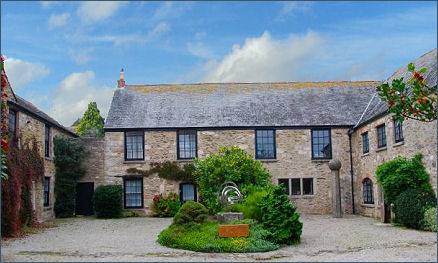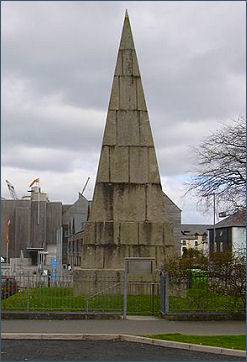Arwenack House
OS Grid Reference:- SW 812 323
 Arwenack House opposite Discovery Quay in Falmouth was home to the Killigrew family for centuries. The name ‘Arwenack’, loosely translates as, ‘white water’.
Arwenack House opposite Discovery Quay in Falmouth was home to the Killigrew family for centuries. The name ‘Arwenack’, loosely translates as, ‘white water’.
Originally built in 1385 and then largely rebuilt around 1567-1571 by Sir John Killigrew, the first Governor of Pendennis Castle. At that time it was described as 'the finest and most costly house in the country'.
The Killigrew family were amongst the the most powerful families in Cornwall and lived at Arwenack for around 16 generations. The infamous female pirate, Elizabeth Trewinnard, Lady Killigrew, was the wife of John Killigrew of Arwenack. In the 1540s, King Henry VIII built Pendennis Castle on Sir John Killigrew's land and made him the first hereditary captain of the castle which meant he controlled all of the shipping in the Falmouth area. However, Sir John used his privileged position to prey on the cargoes of the ships that came within his reach.
 In 1567, Arwenack House was fortified as a stronghold and used to store merchandise stolen in raids on ships. Elizabeth and her husband paid large fees to harbour and city officials, bribing them to look the other way when carrying out their illicit activities. Elizabeth played an active role in the piracy, and apparently enjoyed the adventure more than her husband. She took a Spanish ship which sought shelter in Falmouth harbour, killed most of the crew and removed its cargo. She and her husband received and stored stolen goods at their home, Arwenack House. In 1582, she was arrested and sentenced to death. Queen Elizabeth I eventually pardoned her, and she was released from prison.
In 1567, Arwenack House was fortified as a stronghold and used to store merchandise stolen in raids on ships. Elizabeth and her husband paid large fees to harbour and city officials, bribing them to look the other way when carrying out their illicit activities. Elizabeth played an active role in the piracy, and apparently enjoyed the adventure more than her husband. She took a Spanish ship which sought shelter in Falmouth harbour, killed most of the crew and removed its cargo. She and her husband received and stored stolen goods at their home, Arwenack House. In 1582, she was arrested and sentenced to death. Queen Elizabeth I eventually pardoned her, and she was released from prison.
The Killigrew family are considered the true founders of Falmouth. Sir Walter Raleigh stayed with the Killigrews at Arwenack House and reputedly convinced Sir John Killigrew of the potential of the port. In 1613, Sir John Killigrew truly founded Falmouth. This was not particularly popular with the people of Truro and Penryn as their monopoly on the local trade was greatly affected.
Arwenack Manor was destroyed by fire in 1645 during the Civil War. All that remains of the former medieval building is a derelict portion of windowed wall, once part of the magnificent banqueting hall. There has long been speculation that John Killigrew himself ignited the fire to ensure the Parliamentarians would not revel in the satisfaction. The Manor was eventually rebuilt in 1786 on a smaller and less grand scale.
Peter Killigrew who was persuaded by King Charles II to make the town the Royal Mail Packet Station, where letters and gold bullion were sent from around the world, bringing wealth and influence to Falmouth and the Killigrews. The Killigrew family's dominance ended in the eighteenth century when Peter Killigrew's son was killed in a duel. His son-in-law Martin took the Killigrew name, but he produced no heirs bringing to an end one of the most powerful dynasties in Cornwall.
The Manor steadily fell to neglect and in the 1970’s fell victim to yet a further fire. Extensive restoration work commenced and today the Grade II listed building is made up of private apartments and a house. Across the road from Arwenack House stands an obelisk (above right), which was erected by Martin Killigrew in 1737, it has no markings on it and therefore its purpose is uncertain. An adjacent plaque recites an extensive family history.
Pirates, Smugglers and Wreckers of Cornwall
Historic Buildings in Cornwall